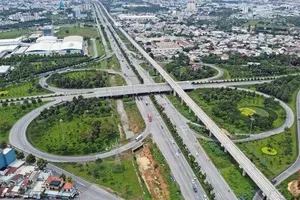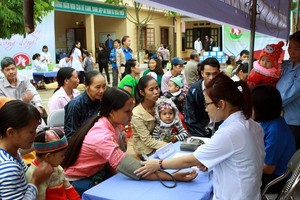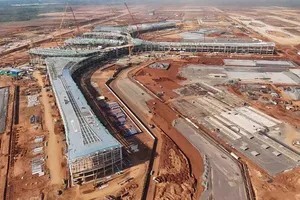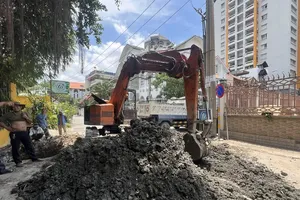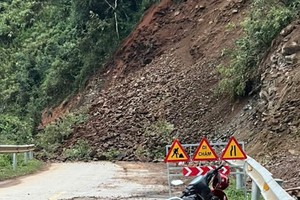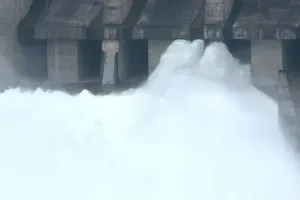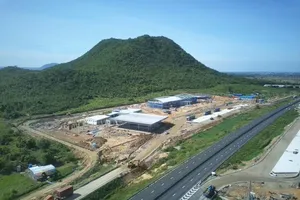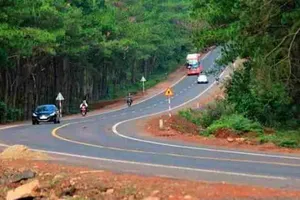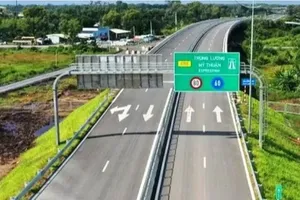Unusually hot, dry weather has put thousands of hectares of rice in the country’s central and Mekong Delta regions at risk of a poor harvest. Residents and local leaders are now undertaking drastic measures to ensure the winter-spring crop does not go to waste.
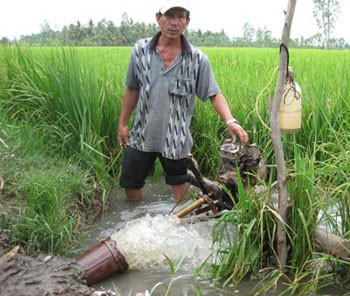
In central Quang Nam Province, 1,600 hectares of rice in Duy Xuyen, Dien Ban and Hoi An have been experiencing drought conditions since the beginning of March.
Water in the province’s Vu Gia and Thu Bon river system has also severely dried up, allowing damaging seawater to move further inland.
According to Quang Nam Irrigation Works Exploitation Company, the water level in Thu Bon River is 43 centimeters lower than last year during the same period, while salinity levels have risen to 0.7-2.4‰.
In Da Nang City, Deputy Director of the Department of Agriculture and Rural Development Huynh Van Thang said that 500 out of 4,500 hectares of rice in Hoa Vang, Cam Xuyen and Lien Chieu districts are experiencing a shortage of irrigation water.
The worst-hit area is Hoa Quy Ward in Ngu Hanh Son District, accounting for 300 hectares of water-starved rice plants.
Nguyen Ban, a ward farmer who had to pump water from a well to irrigate his rice, said the winter-spring crop is the main crop of the year and that a loss could mean starvation.
Several vegetable cultivation areas in Ngu Hanh Son and Cam Le districts, meanwhile, have been abandoned due to the water shortage.
Similarly, rice fields in the Mekong Delta have also suffered extreme hot, dry weather.
Luu Van Sau, a farmer in Thanh Nhut Commune, Go Cong Tay District in Tien Giang Province said drought conditions have not been this bad in years. Nearly 8,000 square meters of his rice failed to grow properly this season, said Sau.
Sharing a similar plight, Nguyen Van Ty from the same district lamented that over the last two weeks, his family had to pump the little water remaining in nearby canals into their rice fields.
Almost 140 hectares of rice in the commune are lacking irrigation water, Deputy Chairman of Thanh Nhut Commune People’s Committee Le Tan Diep said.
Hundreds of hectares of rice in other communes like Dong Son, Binh Nhi, and Vinh Binh are also in the same boat.
In Bac Lieu Province, about 15,000 hectares of rice in districts including Gia Rai and Phuoc Long have been negatively affected by seawater penetration and drought. More than 600 hectares in Gia Rai are in danger of total loss.
Heroic efforts to save crops
The Quang Nam Province Department of Agricultural and Rural Development has instructed relevant authorities to carry out urgent measures to cope with the drought.
The department has also dammed up the Xuyen Dong Pumping Station to prevent further seawater penetration.
In addition, the Quang Nam Irrigation Works Exploitation Company has installed seven pumping machines, with a capacity of 7.5-33kwh, to carry water from rivers to 1,600 hectares of rice.
The province has installed several other pumping machines and reserved water at ponds and reservoirs.
According to Nguyen Thien Phap, head of Tien Giang Province’s Irrigation Sub-department, the unusually bad drought and seawater encroachment is due in part to climate change.
The quantity of water running from the Mekong River to lower areas in the delta has also fallen sharply and it is forecast that seawater will penetrate 60 kilometers further inland in the province this year.
The Irrigation Sub-department has closed all sluice gates to stop seawater penetration and is rushing to preserve stores of fresh water.
In Soc Trang Province, where over 10,000 hectares of rice is currently being dried, Ho Quang Cua, deputy director of the provincial Department of Agriculture and Rural Development said that officials have been dispatched to especially vulnerable areas to monitor conditions.
The department has also asked central authorities to allocate VND10 billion (US$540,000) to save rice crops.
Bac Lieu Province said it needs around VND2 billion to irrigate rice fields and rescue crops.
